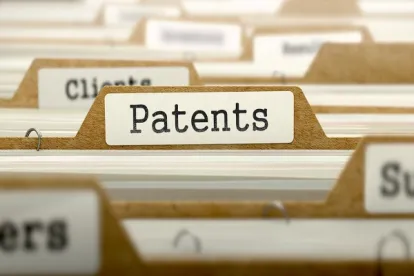Addressing whether the Patent Trial and Appeal Board (PTAB or Board) may institute inter partes review (IPR) with respect to some but not all of the claims challenged in a petition, the US Court of Appeals for the Federal Circuit upheld the Board’s authority to choose the claims on which to institute review. Synopsys, Inc. v. Mentor Graphics Corp., Case Nos. 14-1516; -1530 (Fed. Cir., Feb. 10, 2016) (Dyk, J) (Newman, J, dissenting).
Mentor owns a patent concerned with detecting bugs (i.e., errors) in the source code of microchips. Synopsys petitioned for IPR of 29 claims on multiple grounds. After the petition was filed, Synopsys acquired an entity that Mentor had sued more than one year prior to the filing of the petition, and Mentor argued that Synopsys’ petition should therefore be time barred. Nonetheless, the Board instituted IPR.
The Board limited the scope of the review to 12 claims and only on one ground: anticipation by a prior art reference to Gregory. Mentor filed a contingent motion to amend along with proposed substitute claims. In its final written decision, the Board found that three of the challenged claims were anticipated, while the other reviewed claims were not anticipated. The Board did not consider whether the other reviewed claims might be invalid for obviousness. The Board also denied the motion to amend the invalidated claims, finding that Mentor had not shown that the proposed substitutes were patentable over Gregory or generally patentable over the prior art. Synopsys appealed the Board’s decision to review some but not all claims as well as its decision that two of the reviewed claims were not anticipated. Mentor cross-appealed regarding the time bar and the Board’s denial of Mentor’s motion to amend.
The Federal Circuit affirmed the denial of Mentor’s motion to amend, finding that the Board’s ruling that Mentor had not shown the proposed amendments patentable over Gregory was sufficient to defeat the motion under Proxyconn and Prolitec. Accordingly, the Court declined to decide whether the Board could require a showing of “general patentability over the prior art.” The Federal Circuit also declined to review the Board’s refusal to find the IPR time barred in light of Synopsys’ post-petition acquisition of an alleged infringer, explaining that the institution decision was not reviewable under Achates. Finally, the Court also affirmed the Board’s holding with respect to the non-anticipation of claims 1 and 28 as supported by substantial evidence.
Addressing an issue of first impression, the Federal Circuit affirmed the Board’s authority to institute review with respect to some but not all claims. The Court distinguished the phrase “any patent claim challenged by the petitioner” used in the statute regarding a final written decision from the phrase “claims challenged in the petition” used in connection with the institution standard. In doing so, the Court endorsed the US Patent and Trademark Office’s efficiency-driven system for IPR in which the Board determines both whether and to what extent it will institute review, and that the decision is unreviewable. The panel majority found “no statutory requirement that the [B]oard’s final decision address every claim raised in a petition for inter partes review,” but only a requirement that the Board “address claims as to which review was granted.” The language of the law “is quite clear” that the Board can choose to review some claims but not others.
Judge Newman, in dissent, argued that efficiency concerns cannot authorize derogation from the plain language of the statute, which in her view requires a binary, all-or-nothing (unreviewable) institution decision followed by an appealable, substantive decision with respect to each of the challenged claims. Newman argued that letting the Board pick and choose which claims it wants to review creates an “absence of finality [that] negates the AIA’s purpose of providing an alternative and efficient forum for resolving patent validity issues.”
Practice Note: Patent owners can use their Preliminary PO Statement to try to prevent institution at least with respect to some challenged claims, even if other challenged claims are quite broad and vulnerable. Patent owners should emphasize distinctions among and between various challenged claims to entice an efficiency-driven Board to arrive at the narrowest possible institution decision.



 />i
/>i

